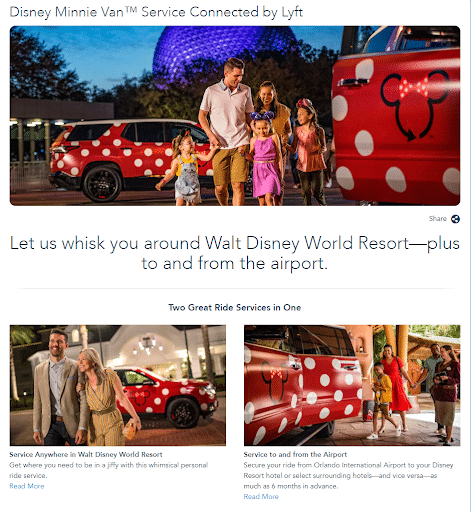What is affinity marketing, and how can it help your business grow?
Affinity marketing is one of the most beneficial types of marketing for businesses looking to expand through partnerships. We’ll break down how affinity marketing can grow your audience through strategic partnerships, and share affinity marketing strategies and tips your business can use.
Affinity marketing definition: What is affinity marketing?
Affinity marketing is a type of marketing that involves a mutually beneficial partnership between two brands. It is sometimes also called co-marketing, co-branding, or partnership marketing.
In affinity marketing, a business teams up with another related (but non-competing) brand to offer products, services, or other benefits to both their target audiences. This marketing carries the branding of both businesses, and puts each one in front of a whole new market. This helps each business increase brand awareness and grow their customer base. It’s a win-win!
Affinity marketing examples
You’ve probably seen brands use affinity marketing techniques many times before, and likely without realizing it. Here are some examples of affinity marketing campaigns from specific brands.
- Taco Bell has partnered with Doritos to offer Doritos Locos Tacos menu items at Taco Bell locations.
Source: Zombieite on Flickr/(CC BY 2.0)
- Disney has partnered with Lyft to offer a Minnie Van Service, to help families get around the Walt Disney World resort area.
- Credit card company Chase teamed up with British Airways to offer a British Airways branded Visa card, available exclusively to Chase customers. Using the card earns members Avios reward points for future British Airways flights, and simply opening the account awards immediate British Airways benefits.
- Red Bull and GoPro are both brands associated with high-adrenaline adventures. In 2012, Red Bull partnered with GoPro to support a record-breaking skydive from a balloon. Red Bull sponsored the attempt, and the skydiver wore a GoPro camera to capture his jump. Years later, the two brands formed a lasting partnership for Red Bull extreme sports events, such as the Red Bull Rampage, where only GoPro cameras are used to capture athletes’ point-of-view shots at these events.
Affinity marketing strategies and best practices
Now that you understand what affinity marketing is, and have seen some affinity marketing examples from today’s top brands, let’s break down the major affinity marketing strategies and best practices you’ll need to follow to start an affinity marketing campaign.
1. Choose the right partner for mutual benefits
All affinity marketing efforts are meant to offer value to both parties, and give both parties something to gain. So when forming an affinity marketing partnership, you’ll need to choose your partner carefully.
Think back to some of the partnerships we listed as affinity marketing examples. Why have they worked so well?
The Red Bull/GoPro partnership, for example, was a success because both brands have similar adrenaline-seeking audiences. Now, thanks to affinity marketing, both brands have an even stronger association with high-level thrills.
Source: Marco Verch on Flickr (CC 2.0)
Doritos and Taco Bell both have the same target market: young audiences who are looking for quick, inexpensive snacks (not healthy food). It’s likely that those who enjoy Doritos would also enjoy something from Taco Bell. Both are food companies, but each normally distributes their products in a different way, and Taco Bell’s meals don’t directly compete with Doritos’ snacks. With this alignment, the Locos Tacos partnership makes sense.
Make sure both of your brands relate well to each other and will mutually benefit. The affinity partnership needs to make sense and offer an incentive for both brands involved.
Here are some points to keep in mind when considering affinity marketing:
- Choose a partner who has a similar audience and/or is in your broader industry, but doesn’t directly compete with you.
- Partner with a brand that your customers would genuinely be interested in and benefit from.
- Make sure your brands – the ways you each present yourself – complement each other. You don’t want to partner with a brand whose values or image clashes with yours.
- Consider the value each brand brings to the partnership: Growth of your customer base or membership base? Increased social media following? Exposure to an audience that hasn’t heard of you before?
- Offer something to the other brand’s audience that they can’t on their own. And vice-versa – what can the other brand offer to your audience?
2. Plan a strategic partnership
Once you’ve chosen the right partner, and you’ve agreed on what your strategic alliance or partnership will involve, you now need to agree on detailed goals for the partnership. Make sure these goals are specific and measurable.
Examples of detailed goals you could set include:
- Increase leads from a specific audience demographic by X%
- Increase purchases from a specific audience demographic by X%
- Increase social media following by X%
- Increase brand awareness, measured by an increase in website or social media visitors
Then, you need to agree on how the co-branded effort will be presented and marketed. Create a plan for the specific marketing messages and channels you’ll use, as well as the timeline for the campaign.
It’s important to also share your respective brand guidelines and rules for using each other’s brand image. This keeps everyone aligned with what’s allowed when promoting the campaign.
And finally, create a written agreement that outlines what is expected of each brand in the partnership.
3. Communicate smoothly with your partner
Affinity marketing campaigns are two-way streets. You’ll need to set up effective communication methods to convey important information and make decisions in real time. Make sure you’ve set up ways to ask any questions or stay in touch throughout the partnership.
For the most effective marketing, it’s also essential for both brands to access files and other digital assets needed for the campaign. For example, a partner portal can help organize everyone’s assets all in one place. PRM (partner relationship management) software also has specific features that help to monitor your partnership. These features include partner portal creation, partner onboarding, protected asset storage, and tracking of sales generated in the partnership.
A best practice would be to set up dedicated times to check the status of the campaign together, and to make sure each partner is truly benefiting from the relationship.
4. Test and tweak your campaigns together
Marketing campaigns are never something you should just leave be. Rather, you need to track key engagement metrics closely so you know how successful the campaign is with your audience.
The same is true with affinity marketing campaigns. However, tracking the success of affinity marketing campaigns is a bit different because of the partnership element. Just as you and your partner need to set campaign goals together, you also need to agree on the KPIs you plan to track across different channels to see how well you’ve achieved your goals.
Then, you both need to track the success of your campaigns on your respective channels (and share the results with each other). To save time when performing affinity marketing campaigns, it’s often best to use an automated tracking method, such as a CRM or lead management tool.
Based on the data you’ve each collected, you can mutually decide on the next direction for your campaign. For a successful affinity marketing campaign, it’s important that any decision on how to tweak the campaign must be mutual and data-driven.
Wrapping things up
Affinity marketing involves a mutually beneficial partnership between two brands. It enables each brand to reach a new and relevant audience, and gain new customers. However, an affinity marketing partnership will only work if both brands relate well to each other and stand to receive a significant benefit.
If you’re thinking of starting an affinity marketing campaign, choose your partner wisely. And once you’ve started the campaign, make sure to communicate well with your partner, track your success, and make all decisions about the campaign together. It must be a collaborative effort.








